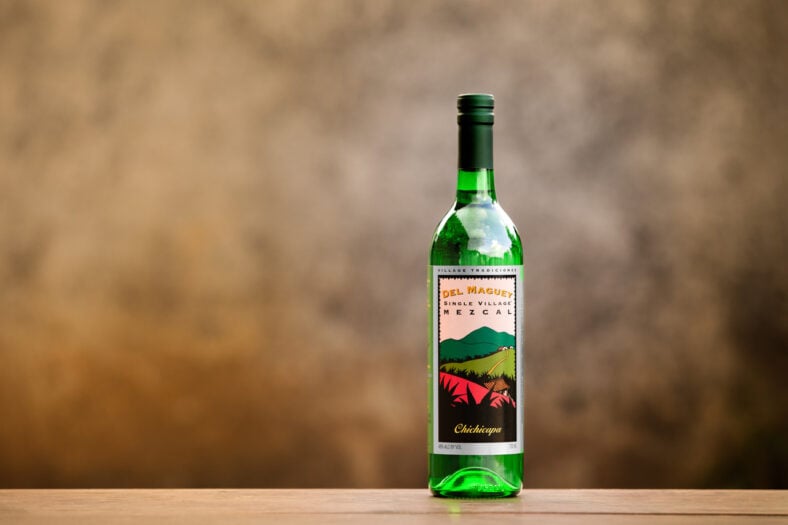
“Faustino [García Vásquez] and his family are really close to us, and he is a true artist. All these guys are, but Faustino is magical—there’s just something about the way he focuses and his consistency, it’s never ever wavered,” Steve Olson proudly declares of one of his cherished mezcalero partners. “[Del Maguey founder] Ron [Cooper] describes his Chichicapa as the archetype of a broad valley mezcal, and I think that explains it perfectly.”
It’s a gloriously warm spring evening on the rooftop of the Casa Oaxaca restaurant overlooking the ancient city’s central plaza. Overhead, the ornate towers of the Templo de Santo Domingo de Guzman loom stoically in the colorful twilight; around us waiters swiftly pass out plates of ceviche-stuffed chile de agua and beef cheek mole de olla.
One of the early members of the Del Maguey team, Olson helped the aforementioned founder Ron Cooper not just launch the seminal label but also single-handedly introduce mezcal to the American market in the mid to late 1990s. This was a time when the only thing people thought about mezcal, if they even knew the word at all, was that it was “that tequila with a worm in it.”
And the bottle Del Maguey used to break into the States? The famed Chichicapa, the now venerated expression crafted by the aforementioned Faustino García Vásquez and his son Maximino from their palenque, aka distillery, in the dusty remote pueblo of San Baltazar Chichicápam.

As the lore goes, Cooper fell in dizzying love with mezcal while exploring Oaxaca and working on his art. Eventually, the idea started fomenting that he would release his own mezcal to introduce this magical liquid to his American brethren. So he actively started sampling mezcal from all over the state with his local friends, some who were Zapotecs—the largest indigenous group of Oaxaca. Then one day fate brought him to the town of San Baltazar Chichicápam to buy their famed wool. As it was a cold morning, all the women selling bolts of brightly colored fabric also happened to be drinking mezcal, so they offered Cooper a copita. Lightning struck.
“So they drink this mezcal and Ron thinks it might just be the best mezcal he’s ever tasted, and it freaks him out. ‘Who made this?!’” Olson dramatizes.
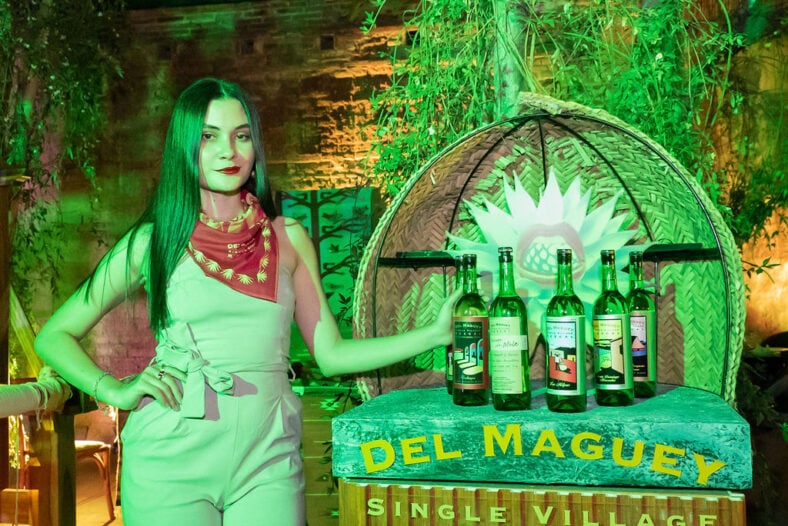
Turns out the alchemist was none other than Vásquez himself. So Cooper asked Vásquez if he was interested in making mezcal for him, to which he happily agreed. The only problem? Vásquez didn’t even own a still. While contemplating renting one for production, Ron did the math in his head and thought, “Why not just build Vásquez his own palenque and go into partnership?” And thus the seed of Del Maguey sprouted.
Now Del Maguey is in partnership with 10 different mezcalero families spread across the state, producing 20 different expressions of their famed “single-village mezcal.” All the juice handcrafted by their partners, with incredible dedication to quality. We were lucky enough to visit the palenque of mezcalero Luis Carlos Vásquez preparing to make his Pechuga (Luis also crafts Del Maguey’s Minero, Arroqueño and Ibérico expressions here). This particular palenque in Santa Catarina Minas is certified “ancestral,” which means it is the most handcrafted mezcal you can find. Agaves grown by Don Luis himself, harvested and deleafed, roasted for eight days in underground pits, smashed with wooden mallets by hand, and then distilled in ancient clay stills. We had the extreme honor and luck of sampling some juice straight from the pot, hot and potent at 70 percent alcohol, and it was the juice of the gods.
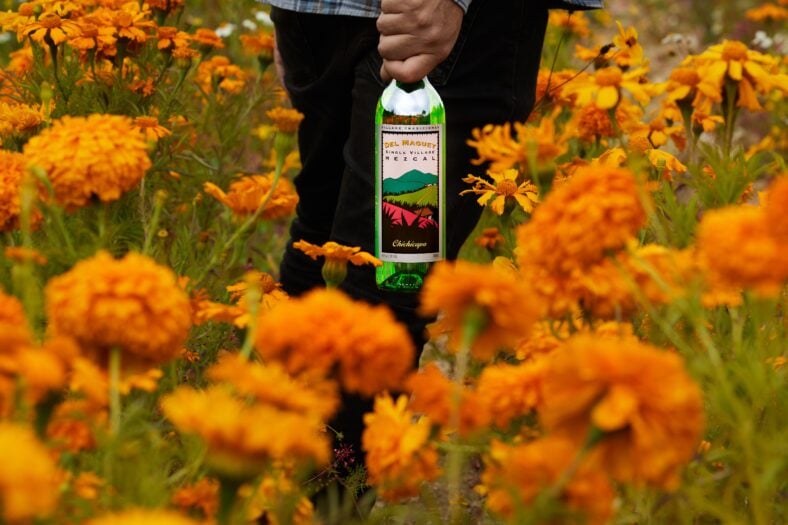
Breaking mezcal into the American market was brutal, decades-long work for Cooper, Olson and the Del Maguey team. After many slammed doors and fruitless dead ends, slowly these single-village mezcals grew coveted and collected by an increasing number of agave aficionados. It was with the creation of the Vida expression in 2010 that really allowed Del Maguey to introduce their famed green bottles to more customers. Still closely handcrafted, Vida had a lower ABV which allowed higher production, helping Del Maguey reach more and more customers. The concept and goal of Vida being that it could be used by bartenders to mix cocktails at a lower price point, pioneering the mezcal cocktail explosion of the 2010s. In 2023 they introduced Vida Puebla, which opened the door for Del Maguey to reach even more customers. Still handcrafted, still with meticulous attention to detail.
On the final night of our Oaxaca visit, Del Maguey threw a celebration for their partners in 30 years of handcrafting mezcal. We joined a calenda —the traditional Oaxacan parade of swirling native dancers, giant papier-mâché “monos de calenda” puppet heads and marmotas, festive oversized balls with “Del Maguey 30th Anniversario” emblazoned on them spun endlessly—from our hotel to the plaza. A festive cacophony of joy impossible to resist, all soundtracked by marching bands echoing off the cobblestone streets.
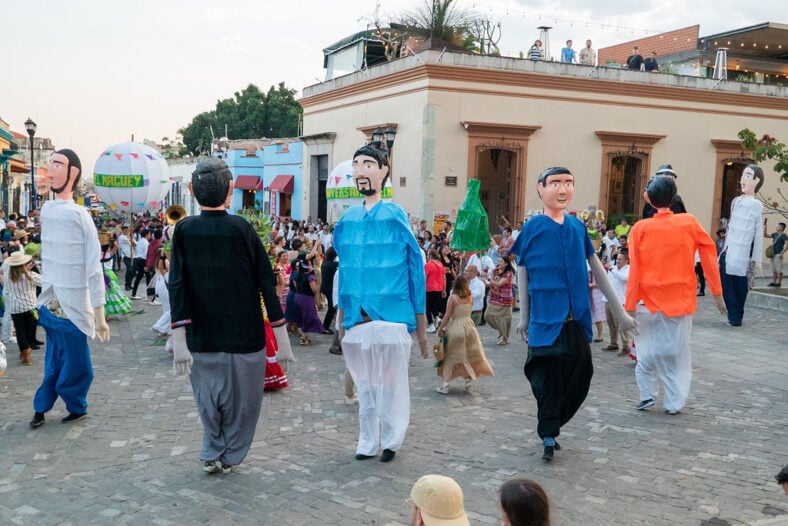
It was heartwarming to meet these humble mezcaleros in person, each one proudly sharing their own mezcal they brought in plastic jugs. While at first mostly shy, as the music, food and mezcal flowed, slowly but surely everyone started opening up, and within a couple hours the dance floor was quaking under the bouncing feet of these wonderful artists and their beaming family members. It was a night not to be forgotten by anyone in attendance.
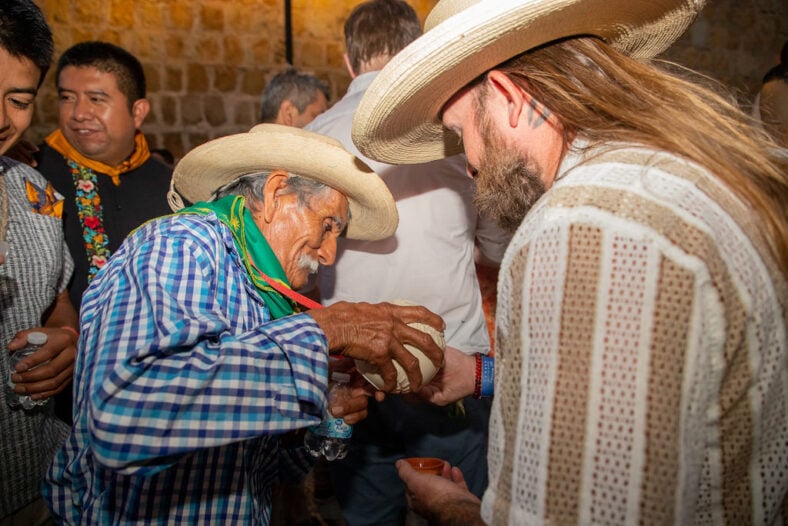
And to think, this 30 year voyage all began with the bottle of Chichicapa you can still buy today. Made with same exacting standards, each drop crafted with love and intention. “It’s a magical, perfect, insanely meticulous distillation process—the guy will not compromise,” Olson told us at the party, in between a long night of hugs with all the Zapotec families. “Faustino will not make volume. He makes it all by hand, every tiny little batch. His agaves are always bordering on overripe, he roasts a little bit longer than most. His artisanal distillation is magic.” The Del Maguey co-founder mentions how he and Vásquez were born two months apart, calling him “one of my closest friends in the world.”
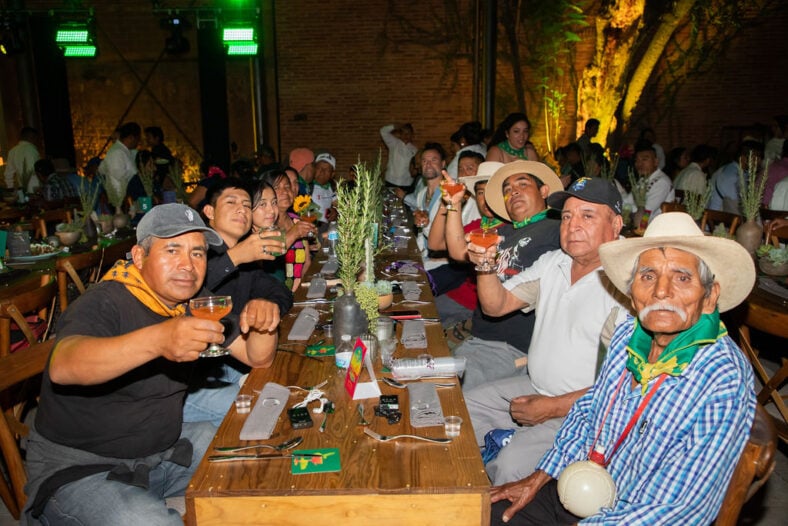
As the party swirls around us, I mention to Olson our amazement at the consistency of the hand-crafted product: batch after batch, year after year, decade after decade of Chichicapa. “Oh my God, I got to tell you—there’s just something about that flavor profile, something about his style, something about the way he does it that every single person who’s ever tasted it, from experts to just novices—people who’ve never even tasted mezcal never forget it,” Olson gushes. “Virtually every single day of my life, when I present, every time I’m at a bar, every time I’m at an event, somebody comes up to me and says, ‘I love Chichicapa, it was my first mezcal!’ So I’m going to say that Chichicapa has turned more people onto mezcal, probably even more than Vida. When somebody tells their Chichicapa story, you know they’ve been around.” Del Maguey Chichicapa is still bottled at 48% ABV, with a SRP of $70.
Follow Deputy Editor Nicolas Stecher on Instagram at @nickstecher and @boozeoftheday.